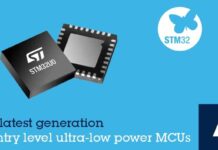A major limiting factor in the growth of Internet of Things (IoT) applications is the amount of power consumed by the edge devices used in IoT networks, and as a result, there is an urgent need to find ways to use far less power to operate them.
GLOBALFOUNDRIES (GF) and Racyics GmbH unveiled a major breakthrough in the race to build more power-efficient IoT devices: record-breaking ultra-low-power operation of a commonly used microcontroller core for mixed-signal IoT applications, built on GF’s 22FDX platform.
The 22FDX platform with ABB capability enables designers to create circuits where transistor threshold voltage can be tuned, or optimized, to match an application’s requirements for energy efficiency, performance, area, reliability, or any combination.
Leveraging this capability, Racyics offers a design IP called ABBX that enables the creation of circuits with reliable, predictable ultra-low voltage operation down to 0.4V. This is done by holistically considering process, supply voltage and temperature inputs to achieve power, performance and area goals with a high yield.
“The need for power-efficiency is urgent because SoCs (systems-on-chip) for IoT applications are projected to grow at a double-digit rate, fueled by diverse and increasingly sophisticated applications across smart city, agricultural, medical, industrial, smart home and other markets,“ said Ed Kaste, vice president of Industrial and Multi-Market at GF. “Although the needs of these applications vary, the most important consideration among all of them is ultra-low power consumption. The record-breaking circuit we produced and will discuss at GTC 2019 is tangible proof that our 22FDX platform offers best-in-class performance, power consumption and level of integration for IoT applications.”
“Our easy-to use turnkey ABBX solution is based on the standard design and sign-off flow, and delivers improved PPA (power, performance and area) results with guaranteed performance and power,” said Holger Eisenreich, CEO of Racyics. “The silicon results demonstrate the benefits of our holistic adaptive body biasing approach for ultra-low voltage designs.”
Cellular narrowband (NB-IoT) devices offer one example of why energy efficiency is such a critical IoT requirement. These devices are often expected to operate on battery power for up to 10 years, and to achieve this, sophisticated energy management techniques are used to activate specific functional blocks and power domains only as-needed. When in operation, extreme energy efficiency at the lowest operating voltages are key to achieving the most demanding power budget.



















